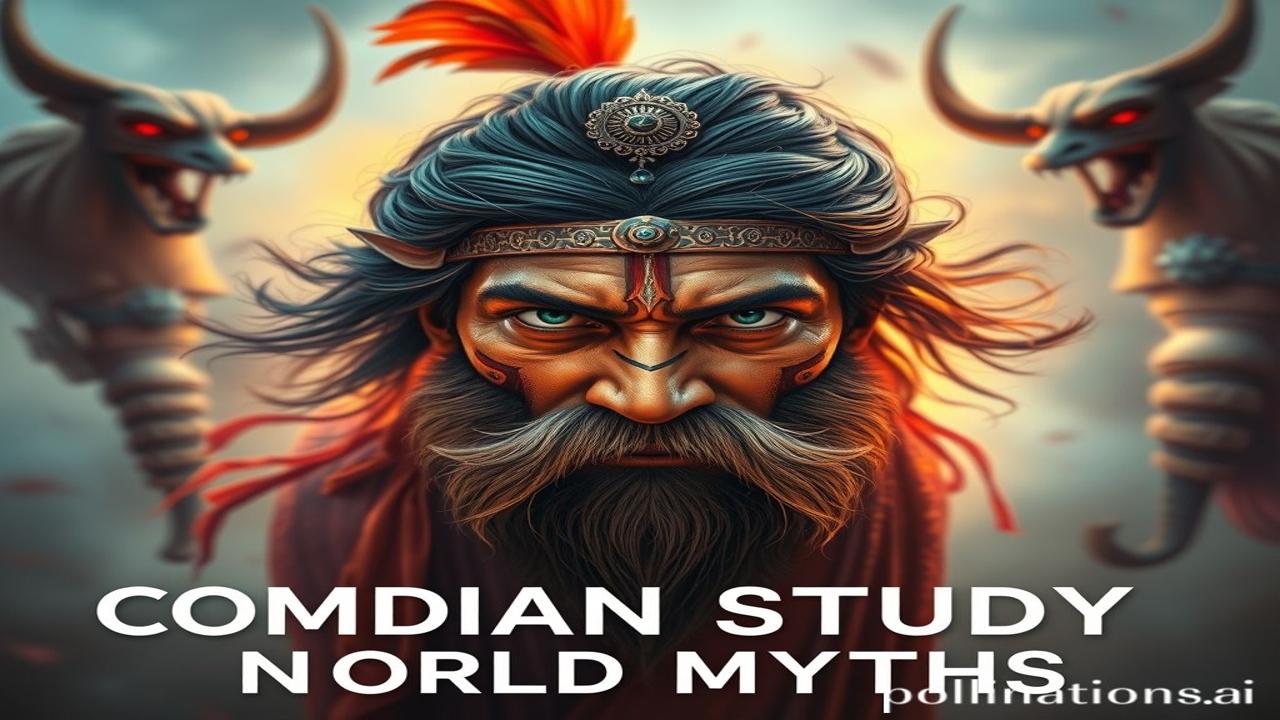Waqt Ke Safar Mein: Indian Aur World Myths Ki Ek Comparative Journey
Kabhi socha hai, agni ki shakti, aakash ka rahasya, aur samudra ki gehrai, insaan ke man mein kaise utri? Waqt ki dhool mein chhupi, mython ki yeh kahaniyan, sirf kalpana nahi hain; yeh hain hamari dharohar, hamari pehchan ka hissa. Today, let’s embark on a journey comparing Indian myths with world myths, exploring their similarities, differences, and the timeless truths they hold.
Myths Kya Hain, Aur Kyun Zaroori Hain? (Historical & Cultural Context)
Myths, in their essence, are stories – often ancient – that attempt to explain the unexplainable. They delve into the origins of the universe, the meaning of life, the nature of good and evil, and the relationship between humans and the divine. India, with its rich and diverse history spanning thousands of years, has a treasure trove of myths woven into its culture and philosophy. From the epics of the Ramayana and Mahabharata to the Puranas, these narratives shape our values, traditions, and worldview. Similarly, other cultures around the globe – Greek, Egyptian, Norse, and more – have their own distinct mythological systems.
Why are they important? Myths are more than just entertainment. They provide a framework for understanding the world, offer moral guidance, and help bind communities together. Think of the stories your grandmother used to tell – they weren’t just bedtime tales; they were vessels of wisdom passed down through generations.
Zamini Sach: Devta, Rakshas, Aur Aam Log (Deep Dive with Human Element)
Let’s imagine a scene from ancient India:
“Ma Yashoda apne Krishna ke liye makhan nikal rahi hain, unke mukh par prem aur chinta ki bhavnayein hain. Krishna, natkhat aur anant shaktiyon wale, phir bhi ek chote bachche ki tarah maa ke pyaar ke bhookhe.” This depicts not just the divinity of Krishna, but also the universal theme of motherly love.
Compare this with a scene from ancient Greece:
“Zeus, the king of the gods, sits atop Mount Olympus, his brow furrowed with worry. He is powerful, immortal, but also bound by fate and the whims of the other gods.”
Do you see the parallels? Despite the cultural differences, these narratives touch upon fundamental human emotions: love, fear, ambition, and the search for meaning. Whether it’s the heroic Arjuna battling inner demons on the battlefield of Kurukshetra or the mighty Hercules facing the twelve labors, these stories resonate because they mirror our own struggles and triumphs. The “rakshas” of Indian mythology find their counterparts in the monsters and titans of Greek mythology – embodiments of chaos and destruction that must be overcome.
Dharohar Aur Pehchan: Myths Aaj Bhi Zinda Hain (Cultural Significance Today)
Aaj bhi, Indian myths hamare tyoharon, kala, aur sanskriti mein zinda hain. Diwali ki raat mein Ram ki Ayodhya wapsi ka jashn manaya jaata hai, Holi ke rang Prahlad ki bhakti ki yaad dilate hain, aur Ganesh Chaturthi ke utsav mein hum buddhi aur shubh aarambh ka samman karte hain.
These stories shape our bharatiyata (Indianness). They influence our values, our moral compass, and our understanding of right and wrong. They are reflected in our art, architecture, music, dance, and even in our daily conversations. Even the concept of “karma” is deeply rooted in Indian mythology and philosophy.
Similarly, myths from other cultures continue to influence art, literature, and popular culture worldwide. The concepts of heroism, tragedy, and destiny, deeply ingrained in Greek mythology, are still prevalent in modern storytelling.
Mazedaar Tathya Ya Bhram-Bhanjak (Fun Fact or Myth-Buster)
Log samajhte hain ki… mythology sirf “jhuti kahaniyan” hain. Lekin asli sach yeh hai… that myths are symbolic representations of profound truths. They are not meant to be taken literally, but rather as allegories that explore the complexities of the human experience.
Did you know… that the concept of a great flood is found in many different mythologies around the world, including the Indian Matsya Purana, the Mesopotamian Epic of Gilgamesh, and the biblical story of Noah’s Ark? This suggests a shared cultural memory or a common human experience with devastating natural disasters.
Drishya Aur Bhavnayein: Waqt Ke Pannon Mein (Visual & Sensory Layer)
Imagine the fragrance of sandalwood incense wafting through the air of a Hindu temple, the sound of Vedic chants echoing in the halls. Feel the cool touch of marble under your feet as you walk through the colonnades. Picture the vibrant colors of a classical dance performance depicting scenes from the Ramayana.
Now, picture the sun-drenched landscapes of ancient Greece, the sound of crashing waves against the shores of the Aegean Sea. Feel the rough texture of a stone temple dedicated to Athena, the goddess of wisdom. Imagine the powerful performances of Greek tragedies, filled with drama, emotion, and moral dilemmas.
These sensory experiences bring the myths to life, making them tangible and relatable.
Antim Vichar Ya Uddharan (Closing Insight or Quote)
In the end, both Indian and world myths are a testament to the power of storytelling. They remind us that human nature is universal, and that we all share a common desire to understand the world around us, to find meaning in our lives, and to connect with something larger than ourselves.
“Vasudhaiva Kutumbakam” – The world is one family. This ancient Indian concept resonates even today, reminding us that despite our cultural differences, we are all interconnected, bound together by our shared humanity and the stories we tell.
